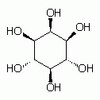Antrocamphin A, an anti-inflammatory principal from the fruiting body of Taiwanofungus camphoratus , and its mechanisms.
Hsieh YH, Chu FH, Wang YS, Chien SC, Chang ST, Shaw JF, Chen CY, Hsiao WW, Kuo YH, Wang SY
J Agric Food Chem
58
3153-8.
2009
Kivonat megmutatása
The fungus Taiwanofungus camphoratus is commonly used for medicinal purposes in Taiwan. It is used as a detoxicant for food poisoning and considered to be a precious folk medicine for hepatoprotection and anti-inflammation. In this study, a lipopolysaccaride (LPS)-challenged ICR mouse acute inflammation model and a LPS-induced macrophage model were used to evaluate the anti-inflammatory activity of T. camphoratus. Ethanol extract of T. camphoratus significantly inhibited expression of iNOS and COX-2 in the liver of LPS-challenged acute inflammatory mice. The ethyl acetate fraction and its isolated compound, antrocamphin A, significantly suppressed nitrite/nitrate concentration in LPS-challenged RAW 264.7 cells. Antrocamphin A showed potent anti-inflammatory activity by suppressing pro-inflammatory molecule release via the down-regulation of iNOS and COX-2 expression through the NF-kappaB pathway. This study, therefore, first demonstrates the bioactive compound of T. camphoratus and illustrates the mechanism by which it confers its anti-inflammatory activity. | | 20128588
 |
Molecular diagnosis of X-linked chronic granulomatous disease in Iran.
S Teimourian, Z Rezvani, M Badalzadeh, C Kannengiesser, D Mansouri, M Movahedi, E Zomorodian, N Parvaneh, S Mamishi, Z Pourpak, M Moin, S Teimourian, Z Rezvani, M Badalzadeh, C Kannengiesser, D Mansouri, M Movahedi, E Zomorodian, N Parvaneh, S Mamishi, Z Pourpak, M Moin
International journal of hematology
87
398-404
2008
Kivonat megmutatása
Chronic granulomatous disease (CGD) is an inherited disorder of pathogen killing by phagocytic leukocytes caused by mutations in NADPH oxidase subunits. Patients with CGD have life-threatening bacterial and fungal infections. Children's Medical Center at Tehran University is the referral center for immunodeficiency in Iran. During 2 years of study, 11 non-consanguineous families with clinically diagnosed CGD were referred to this center. In functional assays performed on neutrophils from affected children and their mothers; no activity or strongly decreased oxidase activity was detected in the patients' cells. In oxidase tests that scored this activity on a per-cell basis, a mosaic pattern was detected in the neutrophils from all 11 mothers. Western blot analysis revealed an X91 degrees phenotype in all patients. Mutation screening in the CYBB gene encoding gp91(phox) by SSCP analysis followed by sequencing showed nine different mutations, including two novel mutations. The present survey is the first study aimed to analyze the clinical features and the molecular diagnosis of X-CGD in Iranian patients. | | 18322777
 |
Selective loss of catecholaminergic wake active neurons in a murine sleep apnea model.
Zhu, Y; Fenik, P; Zhan, G; Mazza, E; Kelz, M; Aston-Jones, G; Veasey, SC
The Journal of neuroscience : the official journal of the Society for Neuroscience
27
10060-71
2007
Kivonat megmutatása
The presence of refractory wake impairments in many individuals with severe sleep apnea led us to hypothesize that the hypoxia/reoxygenation events in sleep apnea permanently damage wake-active neurons. We now confirm that long-term exposure to hypoxia/reoxygenation in adult mice results in irreversible wake impairments. Functionality and injury were next assessed in major wake-active neural groups. Hypoxia/reoxygenation exposure for 8 weeks resulted in vacuolization in the perikarya and dendrites and markedly impaired c-fos activation response to enforced wakefulness in both noradrenergic locus ceruleus and dopaminergic ventral periaqueductal gray wake neurons. In contrast, cholinergic, histaminergic, orexinergic, and serotonergic wake neurons appeared unperturbed. Six month exposure to hypoxia/reoxygenation resulted in a 40% loss of catecholaminergic wake neurons. Having previously identified NADPH oxidase as a major contributor to wake impairments in hypoxia/reoxygenation, the role of NADPH oxidase in catecholaminergic vulnerability was next addressed. NADPH oxidase catalytic and cytosolic subunits were evident in catecholaminergic wake neurons, where hypoxia/reoxygenation resulted in translocation of p67(phox) to mitochondria, endoplasmic reticulum, and membranes. Treatment with a NADPH oxidase inhibitor, apocynin, throughout hypoxia/reoxygenation exposures conferred protection of catecholaminergic neurons. Collectively, these data show that select wake neurons, specifically the two catecholaminergic groups, can be rendered persistently impaired after long-term exposure to hypoxia/reoxygenation, modeling sleep apnea; wake impairments are irreversible; catecholaminergic neurons are lost; and neuronal NADPH oxidase contributes to this injury. It is anticipated that severe obstructive sleep apnea in humans destroys catecholaminergic wake neurons. | Immunohistochemistry | 17855620
 |
A myocardial Nox2 containing NAD(P)H oxidase contributes to oxidative stress in human atrial fibrillation.
Kim, YM; Guzik, TJ; Zhang, YH; Zhang, MH; Kattach, H; Ratnatunga, C; Pillai, R; Channon, KM; Casadei, B
Circulation research
97
629-36
2004
Kivonat megmutatása
Human atrial fibrillation (AF) has been associated with increased atrial oxidative stress. In animal models, inhibition of reactive oxygen species prevents atrial remodeling induced by rapid pacing, suggesting that oxidative stress may play an important role in the pathophysiology of AF. NAD(P)H oxidase is a major source of superoxide in the cardiovascular system; however, whether this enzyme contributes to atrial oxidative stress in AF remains to be elucidated. We investigated the sources of superoxide production (using inhibitors and substrates of a range of oxidases, RT-PCR, immunofluorescence, and immunoblotting) in tissue homogenates and isolated atrial myocytes from the right atrial appendage (RAA) of patients undergoing cardiac surgery (n=54 in sinus rhythm [SR] and 15 in AF). A membrane-bound gp91phox containing NAD(P)H oxidase in atrial myocytes was the main source of atrial superoxide production in SR and in AF. NADPH-stimulated superoxide release from RAA homogenates was significantly increased in patients with AF in the absence of changes in mRNA expression of the p22phox and gp91phox subunits of the NAD(P)H oxidase. In contrast with findings in SR patients, NO synthases (NOSs) contributed significantly to atrial superoxide production in fibrillating atria, suggesting that increased oxidative stress in AF may lead to NOS "uncoupling." These findings indicate that a myocardial NAD(P)H oxidase and, to a lesser extent, dysfunctional NOS contribute significantly to superoxide production in the fibrillating human atrial myocardium and may play an important role in the atrial oxidative injury and electrophysiological remodeling observed in patients with AF. | | 16123335
 |



















